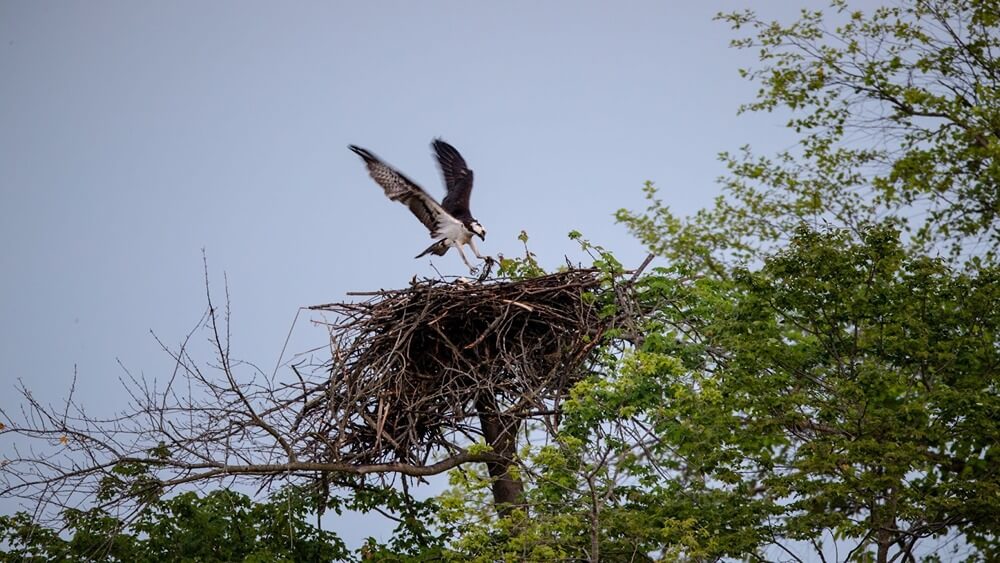Habitat Assessment
Conservation Issue
One of the unique characteristics of Mallows Bay-Potomac River National Marine Sanctuary (MPNMS) is the array of diverse and ecologically unique habitats that have developed over time, both within sanctuary waters and on the surrounding land. Assessing these habitats, identifying the species present, and analyzing the ecological niches that characterize the sanctuary’s biological resources is important for providing a baseline to inform the sanctuary’s co-management team. These data will allow for identification of indigenous vs. non- indigenous species, the impacts of various organisms on MPNMS shipwrecks, and possible ecological shifts due to changing ocean conditions.
Description
The shipwrecks of MPNMS form a series of distinctive islands, intertidal habitat, and underwater structure used by fish, mammals, and birds, including ospreys, blue herons, and bald eagles. This structure is also important to the life histories of commercial and recreational fisheries species and other biota; however, there are key gaps in information regarding the relationships between shipwreck structures, habitat, and living resources.
MPNMS provides a “living laboratory” to study, assess, and interpret uniquely intertwined biological and historical resources. Baseline assessment and sampling of living organisms associated with the wrecks and regular, long-term monitoring of any changes to wreck-associated biological communities can be achieved through techniques such as field surveys, laboratory analysis, community science programs, and remote sensing, including passive acoustic monitoring. Passive acoustic monitoring is valuable for characterizing sanctuary soundscapes and assessing impacts on sanctuary resources, particularly for animals that rely on sound to forage, socialize, and navigate. Such studies will aid in the preservation of the unique and changing ecosystems of MPNMS, as well as the maritime heritage resources that support them.
Data and Analysis Needs
- Biological assessments, counts, and identification of living organisms on shipwrecks and in surrounding sanctuary waters and terrestrial areas, including the presence of non-indigenous species
- Biological assessments, counts, and identification of living organisms below the waterline, including commercial and recreational fisheries species, submerged aquatic vegetation, other living marine resources, and non-indigenous species
- Biological change over space and time
- Passive acoustic monitoring data
Potential Products
- Detailed inventory of living organisms that inhabit the shipwrecks, sanctuary waters, and surrounding land
- Reports, publications, and presentations describing any changes in the biological community and/or biogenic changes to shipwrecks
- Outreach products (e.g., web content, species range maps, story maps, trail guides, visualizations, and digital recordings)
Suggested Scientific Approach and Actions
- Acoustic telemetry
- Passive acoustic recording using hydrophones
- Community science reporting apps
- Remote sensing (aerial and underwater)
Key Partners and Collaborating Organizations
Maryland Department of Natural Resources ● Chesapeake Bay Program ● NOAA Chesapeake Bay Office ● Smithsonian Environmental Research Center ● University of Maryland Center for Environmental Science ● Potomac River Fisheries Commission ● U.S. Fish and Wildlife Service ● The Nature Conservancy ● Sierra Club (Maryland Chapter) ● Port Tobacco River Conservancy ● Maryland Historical Trust ● Virginia Department of Historic Resources ● Widewater State Park ● Department of Defense

For more information about this assessment, contact mallows.bay@noaa.gov.

